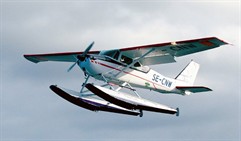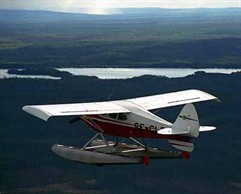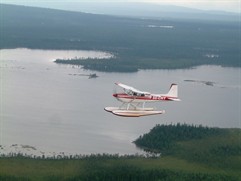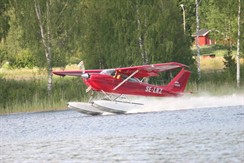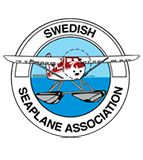Seaplane – freedom and responsibility
Experience the wonderful freedom that our beautiful country Sweden and its fantastic nature has to offer! There are about 95,800 lakes (according to SMHI – Sweden’s Meteorological and Hydrological Institute) to land in, with a few exceptions, the Baltic Sea not included. This must be preserved.
If you have an interest in lake and outdoor activities, and not afraid to experience some trouble, then you have the basic conditions to begin with seaplane flying. Also, if you have access to a seaplane, then it is just to sign up for a certificate. If you also have marine experience then you should definitely try out what flying a seaplane has to offer.
Can anyone learn to fly a seaplane?
Yes, one might say that anyone who learned to fly can learn to fly a seaplane as well. The seaplane operates for the most part outside the “normal” flight system – there’s no one giving you the wind, that says “clear to land” or even “the flight track is free”. It is you, and only you, who decides if good conditions to land is appropriate.
What does it take to become a seaplane pilot?
The formal requirement is that you have a current UL Certificate or PPL (A-Certificate) or higher. Seaplanes also requires practical skills as a sailor, with boats and you should have flying experience enough to concentrate on learning the new: to manage the sea plane during takeoff and landing, taxiing and docking – in short – to fly a seaplane.
You should also like to spend time in nature – that is the finishing touch. But we promise that when you, preferably with a friend, are sitting at the pier on the beach, at the sea front restaurant or on the lake shore and are enjoying the sunset that shines in the pontoons, then you realize that it was worth carrying down all the fuel cans down to your seaplane!
How extensive is the seaplane education?
The course includes 10 hours of flying training, a theory course and a technical / operational training on the aircraft type. The practical training usually contains how to learn to operate the aircraft on the water – we learn how to start on a variety of lakes and under different conditions.
The theory part covers the collision regulations, seamanship and aviation savvy and that you will learn where you may or may not land the seaplane. Great emphasis is laid on environmental aspects and on one’s responsibility as commander to show good judgement and to take the utmost account of those around us, people and nature, when flying a seaplane.
Flying seaplane is an amazing sense of freedom!
With a seaplane you can land in almost every lake and along our coasts. You can reach out to the fishing lakes in the mountains, bathing lake or to a quiet bay in the archipelago. One can combine the flight with other interests .. nature … fishing .. hunting .. swimming or perhaps landing at a restaurant on the beach for a lunch or just to be alone for a while.
Seaplanes have a also an utility value, previously indispensable for transporting people and materials in remote areas, now mostly replaced by helicopters, but still the seaplanes are competitive on longer flights!
Flying seaplanes gives an amazing freedom, a freedom which of course requires a great deal of responsibility-responsibility that the seaplane flying affect our surroundings, both people and nature, as little as possible. The goal is to ensure a future for the free seaplane flying.
Seaplane – freedom with responsibility
